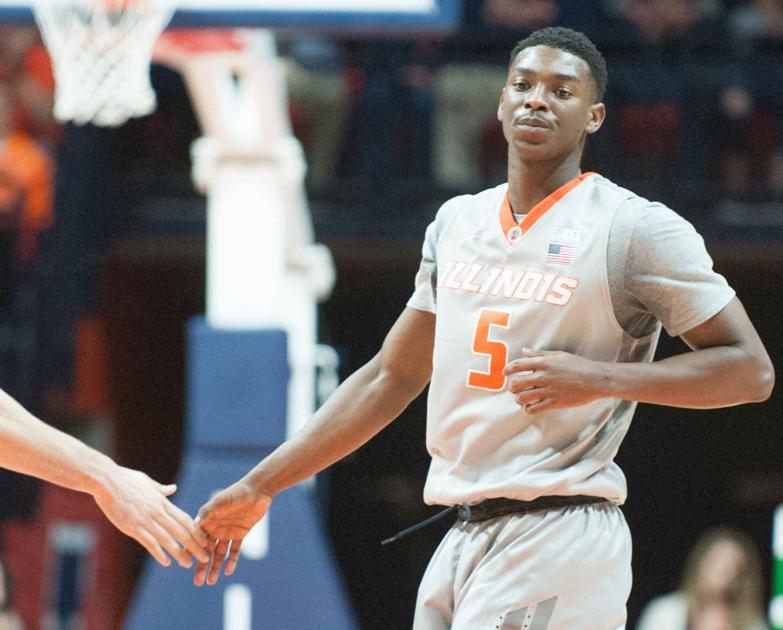
Mike DeCourcy is too prominent as a Sporting News basketball guru to disregard his suggestions.
He is almost always “right on.”
But we part ways on his distaste for a proposed men’s collegiate six-foul rule that is scheduled for experimental testing during next year’s NIT.
First, my reasoning. It dates back to the 1990s when Rich Falk, then supervisor of Big Ten officials, was denied in his push for an extra foul.
Decade after decade, we have watched coaches unwilling to risk starters’ collecting their third foul during the first half, which seemingly happens to one or more players in virtually every game.
It’s not a stretch to say the principle goal in every game plan is to draw two fouls on the opposing center before he is called for two himself.
As for the five-foul disqualification rule, it is simultaneously the most severe and most flimsy in any sport.
There is always contact on pick-and-roll interaction. Contact happens in the post on nearly every entry pass, leaving it to officiating judgment. This explains why second team All-American Kofi Cockburn played just 27 minutes on average, and spent 13 seated. The 7-footer wasn’t winded.
This was Illini coach Brad Underwood protecting him from disqualification.
A great deal would change if players were allowed three fouls in either half and could continue after drawing a fifth foul overall.
Does this make sense?
DeCourcy makes strong points in rebuttal, calling the idea “a dud.”
He emphasizes that there were fewer fouls in 2020-21 than any season since 1948, noting that the Top 15 Sporting News All-Americans were disqualified just 13 times in 447 games.
It’s also true that the rule can be more complicated than just three fouls per half, which it is.
As for the reluctance of coaches to use players with two fouls during the first half, analytics and common sense agree that it is a “foolish, self-defeating tactic.”
Nevertheless, it is universal.
But here’s reality: Coaches don’t always follow logic. Records show they should call for a foul to prevent a tying three-point shot during the final seconds, but mostly don’t. They should return players with two fouls regardless of the time, but mostly don’t.
Fans do not attend to see regulars benched. The final portion of too many first halves is conducted with subs in abundance. The game would surely benefit from fewer DQs.
Midwest roots
Switching subjects, it is nearly 5 1/2 years since Jalen Coleman-Lands saved the Illini from embarrassment by sinking a corner trey to edge Chicago State 82-79 in Springfield. He averaged 10.3 and 8.0 points during two seasons for John Groce.
Coleman-Lands departed as Underwood arrived, and has become a basketball vagabond. Having moved in high school from Indianapolis to La Lumiere in La Porte, he spent two seasons at Illinois, played just nine games due to injuries during his first two years of a shaky patch at DePaul, averaged 14 points for a 2-22 Iowa State team this past season and has hooked on with Bill Self at Kansas for what would be his seventh year of college.
For a full half-century, the Illini haven’t had much luck getting Hoosier products to stick around (most notably, Eric Gordon committed to Illinois on Nov. 30, 2005, but later reneged).
Native Hoosiers Mike Price and Bob Windmiller wrapped up their UI basketball careers in 1970, with Windmiller electing to play for the Illini baseball team as a senior in the spring of 1971. Elkhart’s Garvin Roberson — top Illini wide receiver — doubled in basketball in 1972 and 1973. Noblesville’s Scott Haffner spent a year at Illinois before moving to Evansville, where he scored 65 points in a 109-83 defeat of Dayton in 1989, the same year the Flyin’ Illini reached the Final Four.
That’s it. There seems to be a mythical wall just east of Danville.
Similarly, the only Wisconsin product to sign with Illinois in the last-half century was Te’Jon Lucas, who served at guard for two seasons, moved “home” to Milwaukee, and is now been tapped from the portal by BYU.
That’s the history behind the June arrival of two Illini enrollees, Luke Goode of Fort Wayne and Brandin Podziemski of Delafield, Wis., as they attempt to break the old next-door-neighbor barrier.
We’ll know more later.
Article From & Read More ( Tate | Six fouls? It's worth a try | Sports | news-gazette.com - Champaign/Urbana News-Gazette )https://ift.tt/34dnZ6t
Sport
Bagikan Berita Ini














0 Response to "Tate | Six fouls? It's worth a try | Sports | news-gazette.com - Champaign/Urbana News-Gazette"
Post a Comment